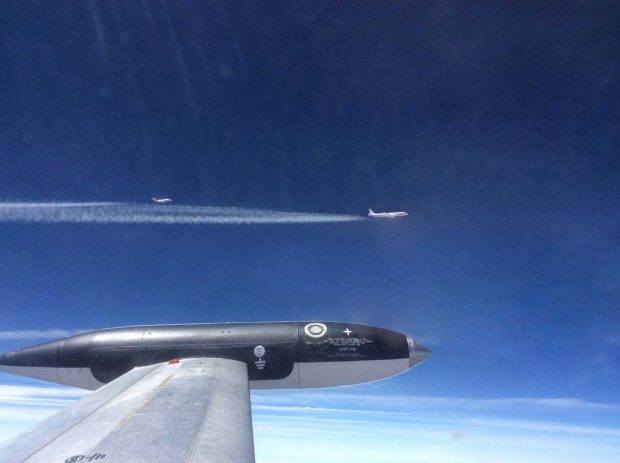Using biofuels to help power jet engines reduces particle emissions in their exhaust by as much as 50 to 70 percent, according to a new study led by NASA and involving agencies from Germany and Canada.
During flight tests in 2013 and 2014 near NASA’s Armstrong Flight Research Center in Edwards, California, data was collected on the effects of alternative fuels on engine performance, emissions and aircraft-generated contrails at altitudes flown by commercial airliners.
Contrails are produced by hot aircraft engine exhaust mixing with the cold air that is typical at cruise altitudes several miles above the Earth’s surface, and are composed mostly of ice crystals.
“Soot emissions also are a major driver of contrail properties and their formation,” said Bruce Anderson, a project scientist at NASA. “As a result, the observed particle reductions we’ve measured should directly translate into reduced ice crystal concentrations in contrails, which in turn should help minimise their impact on Earth’s environment.”
That’s important because contrails, and the cirrus clouds that evolve from them, have a larger impact on Earth’s atmosphere than all the aviation-related carbon dioxide emissions since the first powered flight by the Wright brothers.

NASA’s HU-25C Guardian aircraft flies 250 metres behind the agency’s DC-8 aircraft on May 14, 2014, before it descends into the DC-8’s exhaust plumes to sample ice particles and engine emissions. Photo: National Research Council of Canada
Flying NASA’s DC-8
The tests involved flying NASA’s workhorse DC-8 as high as 40,000 feet while its four engines burned a 50-50 blend of aviation fuel and a renewable alternative fuel of hydro processed esters and fatty acids produced from camelina plant oil.
A trio of research aircraft took turns flying behind the DC-8 at distances ranging from 300 feet to more than 20 miles to take measurements on emissions and study contrail formation as the different fuels were burned.
“This was the first time we have quantified the amount of soot particles emitted by jet engines while burning a 50-50 blend of biofuel in flight,” said Rich Moore, lead author of the report published in Nature magazine.
The trailing aircraft included NASA’s HU-25C Guardian jet based at Langley, a Falcon 20-E5 jet owned by the German Aerospace Center (DLR), and a CT-133 jet provided by the National Research Council of Canada.
“Measurements in the wake of aircraft require highly experienced crew members and proven measuring equipment, which DLR has built up over many years,” said report co-author Hans Schlager of the DLR Institute of Atmospheric Physics. “Since 2000, the DLR Falcon has been used in numerous measurement campaigns to investigate the emissions and contrails of commercial airliners.”
Researchers plan on continuing these studies to understand and demonstrate the potential benefits of replacing current fuels in aircraft with biofuels. It’s NASA’s goal to demonstrate biofuels on their proposed supersonic X-plane.